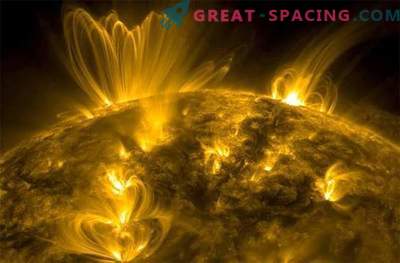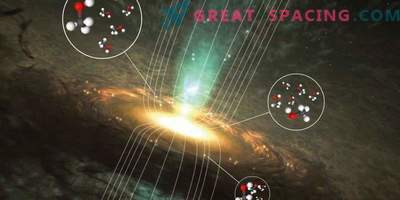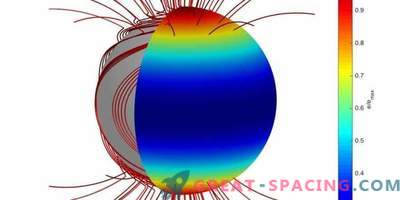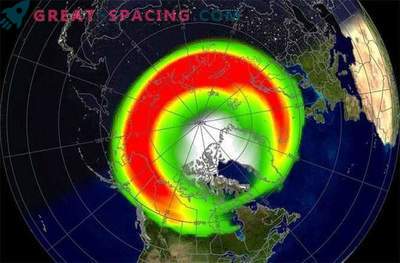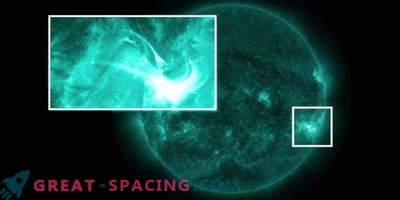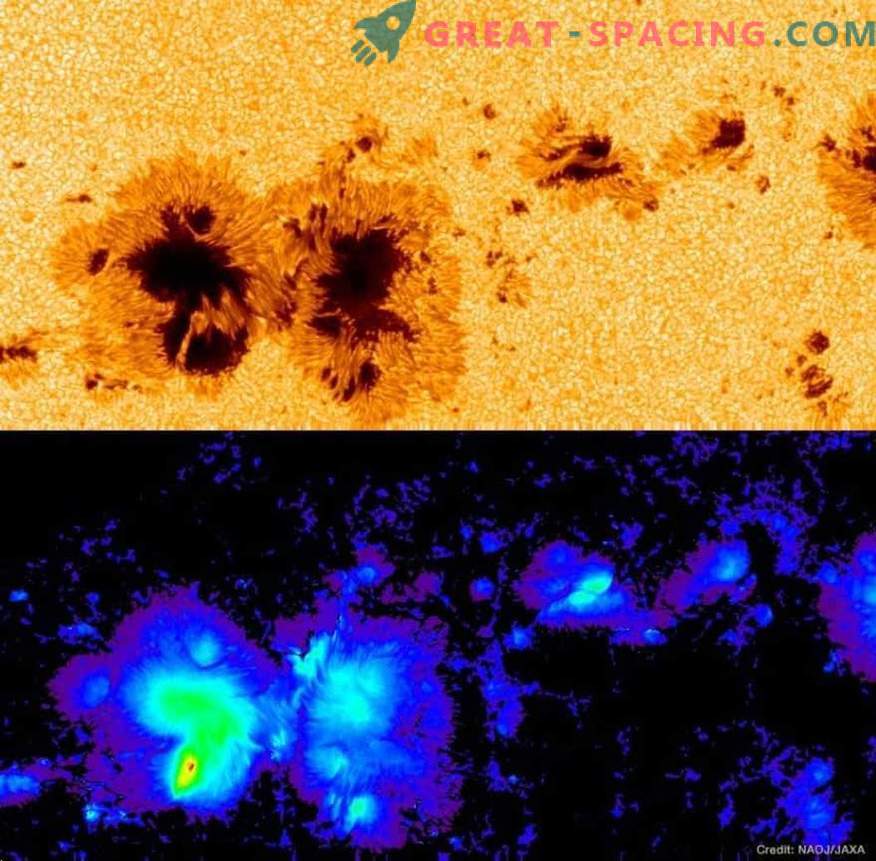
A snapshot of the spot observed by the HINODE spacecraft. Above: visible glow of a solid image. Below: a map of the magnetic field. The color indicates the strength of the field from weak (cold colors) to strong (warm). Red - position with power over 6000 gauss
Researchers from the National Astronomical Observatory of Japan (NAOJ) used the HINODE apparatus to monitor the most powerful magnetic field on the solar surface. After analyzing the information for 5 days, they determined that the force increased due to the “leakage” of gas from one of the spots.
Magnetism plays an important role in various solar phenomena, such as flares, mass emissions, eddies and coronal heating. Sunspots are areas of concentrated magnetic fields. Usually, the Sun consists of a round dark core with a vertical magnetic field and radially elongated thin filaments (partial shade). The penumbra has an external gas flow along horizontal lines. The darkness of the full shadow usually correlates with the intensity of the magnetic field. That is, the strongest magnetic fields in each spot are usually in full shade. The new study used the data of the solar optical telescope of the HINODE apparatus, which monitored the signature of strongly magnetized iron atoms in the sunspot. All indications were that the magnetic field strength was 6,250 gauss, which is twice the usual performance around most sunspots. It is surprising that it was possible to find a record figure in the bright area between two full shadows.
HINODE watched the same spot for several days. This is not possible for terrestrial telescopes due to the rotation of the planet. Continuous information showed that the strong field was always located on the border between the bright area and the full shadow, and the horizontal gas flowed along the direction of the magnetic fields above the bright area. This means that horizontal gas flows out of the southern shadow, compresses the fields near the other shadow (north pole) and increases the field intensity.
